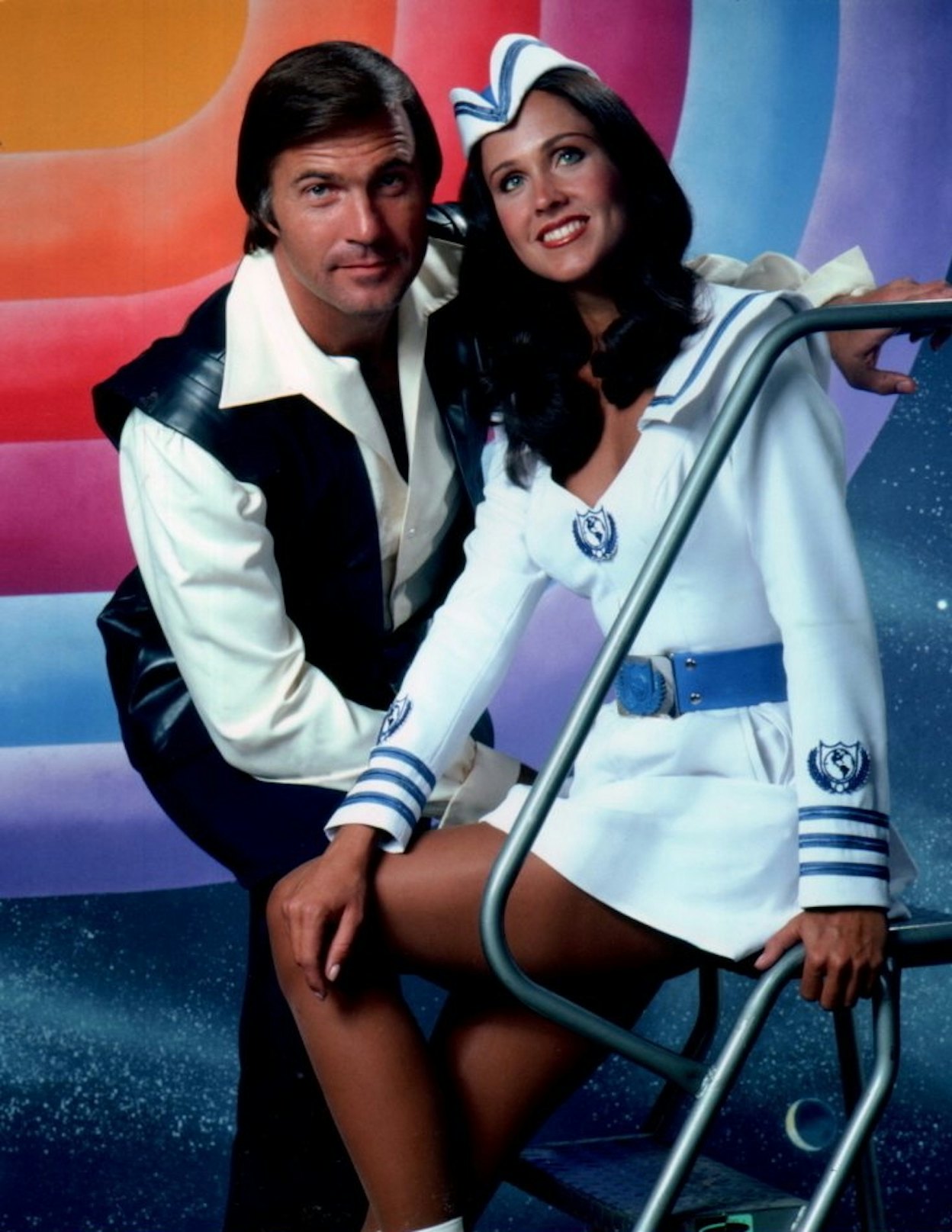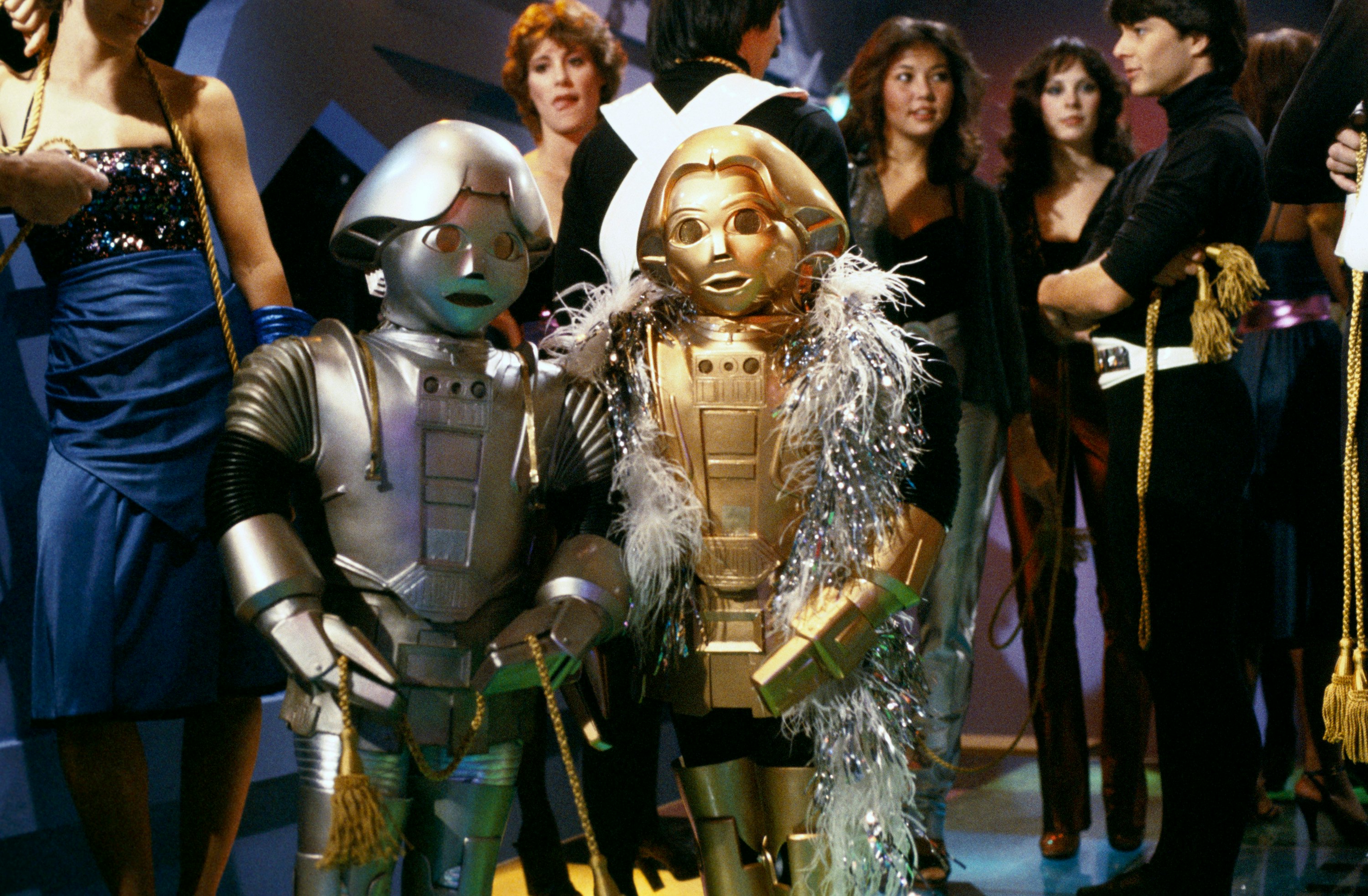
According to the over-the-top opening narration of Buck Rogers in the 25th Century, the experiences of Buck Rogers are either “beyond comprehension” or “beyond imagination.” Both phrases appear nearly back-to-back in this classic TV series introduction, but what happened in January and February 1981 is mostly beyond comprehension.
Twenty-nine years ago, in between Season 1 and Season, 2 Buck Rogers went from being a camp sci-fi adventure show to a boring Star Trek knock-off. And yet, somehow this horrible change also gave the show its best character.
The late ‘70s and early ‘80s were very strange times for TV and movie science fiction. While this period produced some of the best and most thoughtful books in the genre — like Octavia Butler’s Kindred (1979) — the visual mediums of sci-fi were either trying to embrace Star Wars or move away from it. The easiest examples of TV shows that tried to cash in on the popularity of Star Wars are both from producer Glen A. Larson; Battlestar Galactica (1978) and Buck Rogers in the 25th Century (1979). And in 1981, Buck Rogers did something truly bizarre: change its entire premise and format, a move that basically killed the show.
In 1979, Buck Rogers in the 25th Century was a strange hybrid. Because its early production began before Battlestar Galactica was canceled, many of the props, costumes, and vehicles from that series were repurposed. This similar aesthetic vaguely suggested a shared universe between the two shows, even though Battlestar was eventually revealed to be taking place in the present day (of the ‘80s), while Buck Rogers (obviously) took place in the late 2400s.
But, while George Lucas accused Battlestar of ripping off Star Wars, the truth was it was a pretty original, and forward-thinking concept, which later paved the way for the brilliant 2003-2009 reboot series. Buck Rogers was the opposite. It was a reimagining of the comic strip/radio serial/movie serial character that was second only to Flash Gordon in the early days of pop sci-fi in the 20th century. In other words, Buck Rogers was regressive by design, and the first season is cheesier and more ridiculous than even the silliest episode of the ‘60s Star Trek.

In fact, the charm of Buck Rogers Season 1 is that it has more in common with ‘60s Batman than it does with sci-fi shows. (And not only because of a bunch of Batman villains guest starred on the show.) Buck (Gil Gerard) is a kind of out-of-time James Bond, which makes aspects of the show feel like a spy spoof. To be clear, Buck Rogers was never a comedy, but its intentionally kitschy tone and sexy disco vibe indicate the show was trying to please crowds, not stimulate minds. Whereas Battlestar had some philosophical ruminations stuffed into an uneven ‘70s show with Star Wars aesthetics, Buck Rogers had episodes like “Vegas in Space,” which is just about as sophisticated as it sounds. But, all of this corniness is what made Buck Rogers great. The show was enjoyable because it wasn’t trying too hard to be deep, and for the time, it was unique in its action-hero character-centric approach to TV sci-fi. Later, Glen A. Larson would create Knight Rider, and in a way, Buck Rogers Season 1 was the template.
This is why what happened in those early months of 1981 was truly baffling. After an actor’s strike in 1980 delayed the production of Season 2, the show completely changed its format and created new cast members. In Season 1, Buck was assigned cool missions from the Earth Defense Force, which would occasionally mean putting on a bunch of leather and posing as a bounty hunter, like in the classic “A Plot to Kill a City.” But, in Season 2, Buck, and his former commander, Col. Wilma Deering (Erin Gray) are suddenly on a bargain basement version of the USS Enterprise called The Searcher, wandering around the universe looking for ... lost tribes of humanity.
Essentially, Glen A. Larson borrowed his panspermia concept of humanity from Battlestar, slapped it onto Buck Rogers, and turned the show into a boring version of Star Trek. The captain of the searcher, Admiral Efram Asimov (Jay Gardner) is inexplicably the decedent of Isaac Asimov, but you’d hardly know it. And, strangely, Buck Rogers decided to double down on kooky old guys, by including Dr. Goodfellow (Wilfrid Hyde-White), who was like if Q from the James Bond series were senile and everybody just tolerated the fact there was dried food on his sweater.

However, in the middle of all of these extremely milquetoast changes, Buck Rogers also brought on the character of Hawk (Thom Christopher), an alien birdman who kicks ass. Hawk an has outrageous featherhead and is a fantastic stoic ally for Buck. He’s so good, you wish he was in Season 1. Clearly, Laron was trying to give Buck Rogers its own version of Spock, to match Buck’s Captain Kirk-esque persona. And with Hawk, it worked. His spaceship is shaped like a bird and has cool claws for getting other spaceships. And, thankfully, Hawk brought back the signature leather that for some reason other cast members were denied in Season 2.
If you watch Buck Rogers Season 2 now, the debut — “Time of the Hawk” — is pretty interesting. But, just as this quirky sci-fi show got its best character, the fuel was running out of its spaceship. Which, frankly, isn’t a ship they needed in the first place. Buck Rogers was cooler when he lived on Earth and hopped in a starfighter whenever he was needed. If this franchise ever truly gets rebooted, everyone should look at the Searcher years as a warning: Let Buck stay on Earth!
Buck Rogers in the 25th Century is streaming on Tubi and NBC.com.







